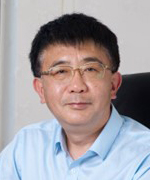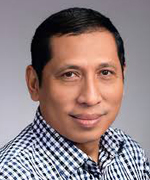Doing Business in SE Asia
Scroll Down to Read
By Renee Targos
Editor
Bringing a new synthetic crop protection product to the Southeast Asia market is greatly needed—but not easy.
SE Asia’s diversity of languages and regulations along with its many smallholder farmers make it a complicated region.

Lawrence Yu, President/Asia Pacific, AMVAC
“It is a smaller market,” says Lawrence Yu, President/Asia Pacific, AMVAC, based in Singapore. “We must recognize that registration in SE Asia is now a demanding task, time consuming, and becoming more and more costly with individual efforts needed in each country (lack of ASEAN registration harmonization). The return on investment is becoming more and more critical.”
While registering a product in SE Asia generally costs less and requires a shorter review time than regions like the EU, new challenges are arising from local government product bans and strategies to reduce registrations of synthetic crop protection products with the goal of having biologicals in lieu of synthetic.
The efforts toward harmonization have been made but are stalling. In 2012, the United Nations Food and Agriculture Organization (FAO) published The Guidance for Harmonizing Pesticide Regulatory Management in Southeast Asia. However, much work needs to be done.
“If ASEAN as a block does not push through harmonization and common MRLs, very soon SE Asia will find itself facing shortage of new innovative products coming from research-based companies,” says Yu.
Profitable Segments
While each country in the region presents unique challenges, there is a way to successfully launch a synthetic crop protection product by creating a niche market.
Xuemin Wu, Professor of National Pesticide Formulation & Adjuvant Laboratory at the China Agriculture University works on research and development (R&D) for products targeted at Southeast Asia and other regions around the world.
With climate change bringing new challenges for growers with pests, fungus and other problems, companies need to know the SE Asian grower’s pain points to create an entry into market.

Xuemin Wu, Professor of National Pesticide Formulation & Adjuvant Laboratory China Agriculture University
“According to the changing trends of pests and diseases in the target region, R&D has to look for innovative pest and disease solutions,” says Wu. “You need to focus on the major pest and disease control needs in the growing region to find breakthrough points.”
Yu says some of those regional problems include rice brown planthopper, plantation herbicides, tropical fruits like phytophthora palmivora control in durian, corn seed treatment, Banana Sigatoka disease, golden apple snails, and nematodes.
“In SE Asia, research-based companies have a lower market share than off-patent companies that are dominated by China and India based companies,” says Yu. “There are more opportunities with original fungicides owing to progressive building up of resistance over time.”
Another area of opportunity includes formulations for unmanned aerial vehicles (UAV). With Asia growing in adoption of ag technology, especially drones, there is an opportunity for specialized formulations to increase efficacy for drone application.

Final Prajnanta, CEO of ADAMA Indonesia/Royal Agro Indonesia
“It could be a good solution,” says Final Prajnanta, CEO of ADAMA Indonesia/Royal Agro Indonesia. “New formulation is a part of innovation for the company developing common actives.”
Yu agrees and says, “Precision application area (especially drones) is where innovative formulations still have plenty of room to develop.”
Strategizing for Success
As you target your niche, Prajnanta says companies can be successful by knowing their own strengths and weaknesses, so they know what area they can develop their business.
To be successful in the region, a company needs to have boots on the ground and a strong marketing plan to educate and create buy-in with smallholder farmers. This involves working with people who know the language and culture, can put in the effort, know your product, and build relationships.
“Invest in the best people in the industry,” says Prajnanta. “It’s not the quantity but more on the quality.”
As relationships are built in each region with the growers, follow the opportunities with a plan to put in the work.
“There is a need for more effort to do demand creations in the field,” says Prajnanta. “The company should provide value for money products.”
Other important details include packaging in developing suitable small pack sizes and following regulations on plastics disposal and recycling.
Also, it’s important for companies to build relationships with and follow all local authority’s regulations as this is an area getting more complicated, especially for synthetic crop protection products.
“With shipping cost reducing, the import duty gap between formulated products and technical-grade active ingredients (TGAIs) is not significant,” says Yu. “Chinese industries are going up the value chain to export formulations instead of TGAIs. With local environmental regulation tightening against pesticide factories, formulators without its own distribution arm will be hard to survive.”
Other advice Prajnanta gives for companies is “no need to play in big red ocean, as there is no margin there,” says Prajnanta. “(And) start to research or have a biostimulant or biological product.”
Government Support
Prajnanta and Yu both agree that the pesticides are a sensitive issue for governments of SE Asian countries.
“As countries are pushing for pesticide usage reduction, removal of HPPS, an increase in biologicals, organic farming, and enforcement of MRLs,” says Yu. “It is making the crop protection market more and more unprofitable and to some extent risky.”
However, in some countries, Prajnanta says the government is supporting the chemical crop protection industry “indirectly by providing some projects in order to secure the food security.”
Who You Know
Even after creating great strategies and getting intel, it’s still all about who you know. Relationships are essential for doing business anywhere in the world, but especially in the SE Asia region.
Prajnanta says to bring a product to market in Indonesia, a company must be familiar with contacts at the:
- Ministry of Agriculture – for product registration
- Ministry of Industry
- Ministry of Labor – to understand regulations
- Ministry of Investment
- Ministry of Law and Human Rights (company registration – as it must registered in Indonesia)
- Directorate General of Intellectual Property (DGIP) under the Ministry of Law and Human Rights (MOLHR) for trademark registration

Dr. Piyatida Pukclai, Regional Sales and Regulatory Policy Manager, Knoell
The above mentioned departments also apply to other countries as well as the following list for product registration as given by Dr. Piyatida Pukclai in her presentation for Trade Summit 2024:
Thailand
-
- The Pesticide Registration Division (PRD)
- Department of Agriculture (DOA)
Philippines
-
- The Fertilizer and Pesticide Authority (FPA)
- Department of Agriculture (DOA)
Vietnam
-
- The Plant Protection Department (PPD)
- Ministry of Agriculture and Rural Development (MARD)
Supporting SE Asian Growers
As SE Asian farmers face feeding a growing population, they will need more tools in their toolboxes to create yields to create food stability and combat poverty. With more bans of synthetic crop protection chemicals, new solutions are needed more than ever. •